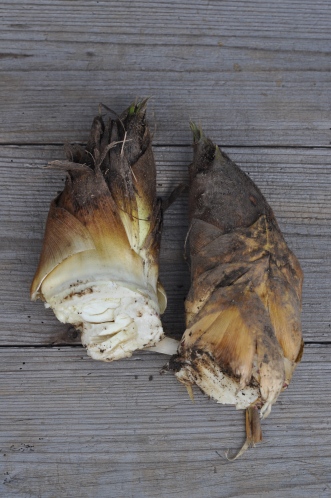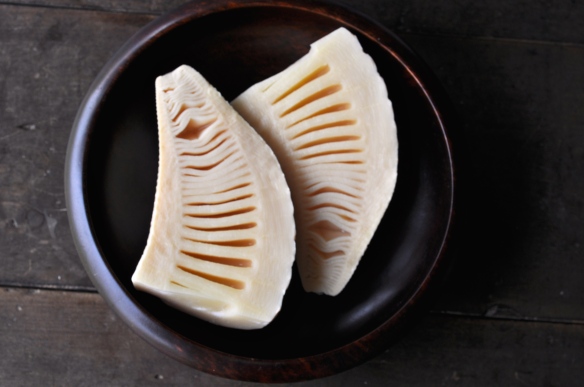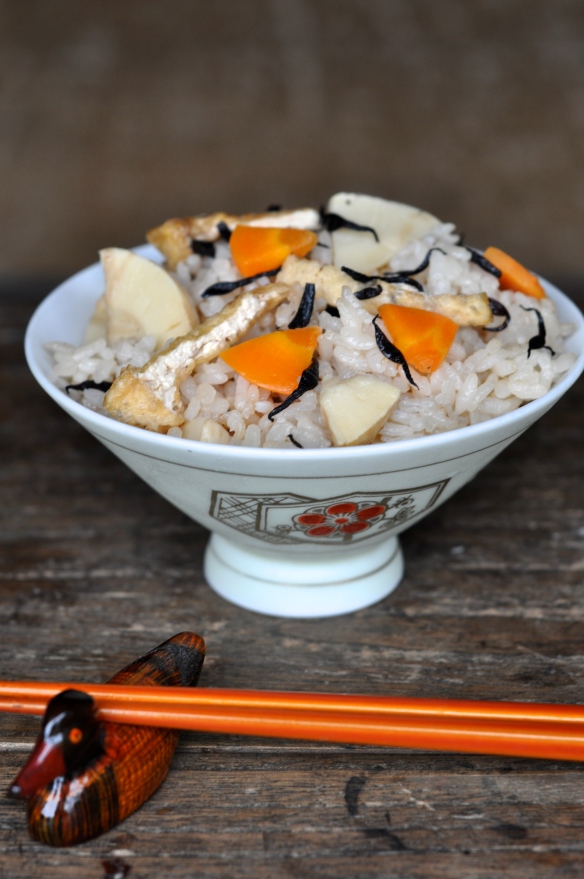April and May hail the arrival of fresh bamboo shoots in Japan, a seasonal delicacy synonymous with the arrival of spring. Just like asparagus or forced rhubarb they appear during a short period of time when little else is available. Of course today takenoko is available vacuum-packed in supermarkets all year round, just like asparagus that is flown in from all corners of the world. Yet harvesting fresh local takenoko is still very much revered and enjoyed.
 The timing is important, the shoots have to be harvested before they get longer than about 30cm, the takenoko above looked beautiful with the smooth brown leaves but the green tips had emerged and the edible parts were smaller and more bitter. These shorter, stumpier shoots were perfect.
The timing is important, the shoots have to be harvested before they get longer than about 30cm, the takenoko above looked beautiful with the smooth brown leaves but the green tips had emerged and the edible parts were smaller and more bitter. These shorter, stumpier shoots were perfect.
While busy packing in the last few weeks we had several neighbours pop round asking if we wanted takenoko from the bamboo grove at the back of our hamlet. Despite being up to our eyebrows and deciding to cook only the simplest of meals (and no photos) I couldn’t resist….
Raw bamboo contain toxins which needs to be removed by boiling. Japanese typically boil with nuka, rice bran, or the water used to rinse rice to remove the aku or bitterness. I boiled them for about 15 minutes then simmered for over an hour. The outer leaves are then easy to peel to reveal the crisp, edible centre. Some people seem to peel before boiling or make a vertical slit in the leaves from top to bottom but boiling whole worked fine for me.
The flavour is mild and sweet so it suits being paired with strong flavours and dressings. Takenoko is used in many different seasonal dishes: steamed with rice in takenoko gohan or taki komi gohan, or simmered in soy sauce, nimono, or added to salads.
At one sayonora party for us our hosts had prepared five different simmered takenoko dishes, take komi gohan as well as wild vegetable tempura, a truly local and seasonal feast that I will never forget.


















 The timing is important, the shoots have to be harvested before they get longer than about 30cm, the takenoko above looked beautiful with the smooth brown leaves but the green tips had emerged and the edible parts were smaller and more bitter. These shorter, stumpier shoots were perfect.
The timing is important, the shoots have to be harvested before they get longer than about 30cm, the takenoko above looked beautiful with the smooth brown leaves but the green tips had emerged and the edible parts were smaller and more bitter. These shorter, stumpier shoots were perfect.
